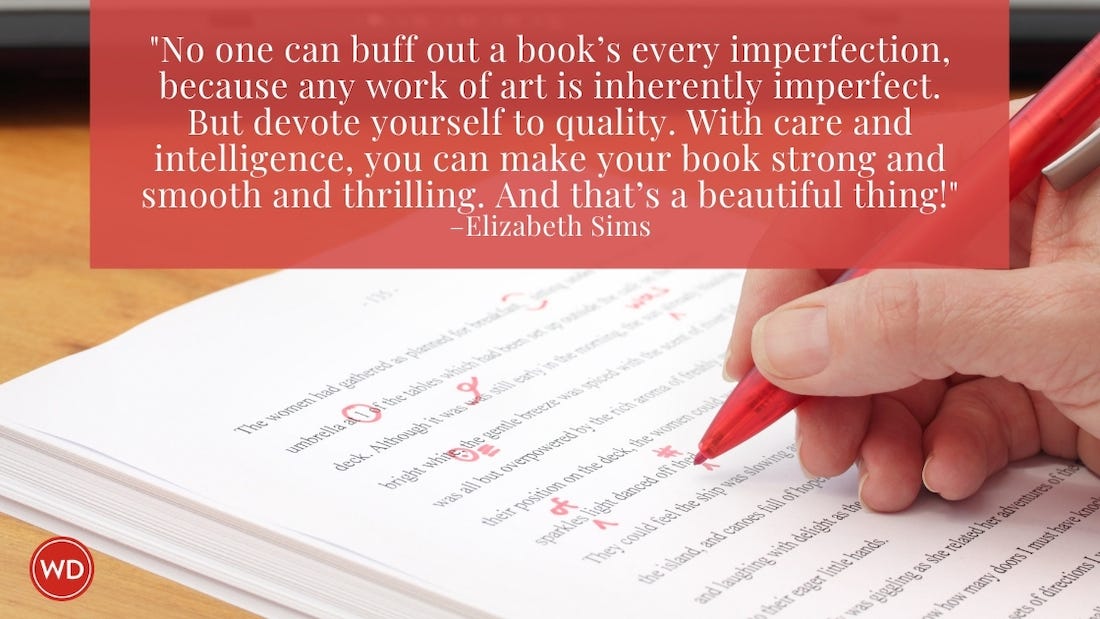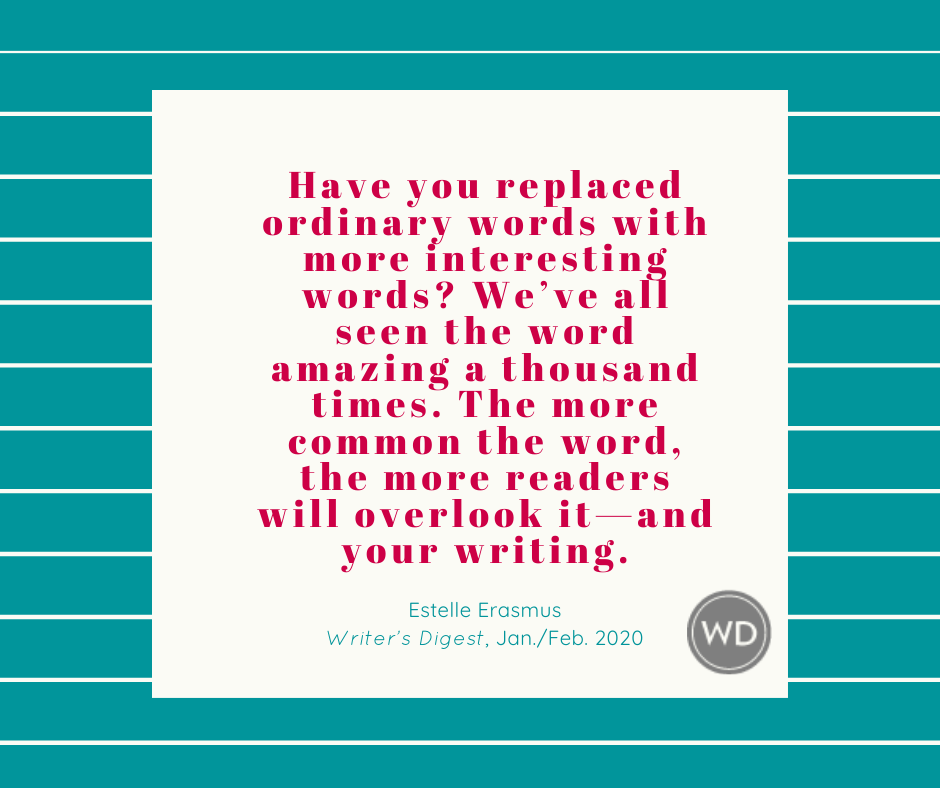7 Tools For Pacing A Novel & Keeping Your Story Moving At The Right Pace
Pacing is a crucial component of fiction writing. After all, it’s important to keep your readers “hooked” throughout your story. Whether you are just getting started in writing or looking…
Pacing is a crucial component of fiction writing. After all, it's important to keep your readers "hooked" throughout your story. Whether you are just getting started in writing or looking to break into fiction writing, you'll need to know the basics of how to pace a novel. Read today's tip of the day from Crafting Novels & Short Stories. In this excerpt written by Jessica Page Morrell, she explains what pacing is and seven ways to keep your story moving at the right pace.
What is Pacing in Fiction?
Pacing is a tool that controls the speed and rhythm at which a story is told and the readers are pulled through the events. It refers to how fast or slow events in a piece unfold and how much time elapses in a scene or story. Pacing can also be used to show characters aging and the effects of time on story events.
Pacing differs with the specific needs of a story. A far-reaching epic will often be told at a leisurely pace, though it will speed up from time to time during the most intense events. A short story or adventure novel might quickly jump into action and deliver drama.
Pacing is part structural choices and part word choices, and uses a variety of devices to control how fast the story unfolds. When driving a manual transmission car, you choose the most effective gear needed for driving uphill, maneuvering city streets, or cruising down a freeway. Similarly, when pacing your story, you need to choose the devices that move each scene along at the right speed.
Seven Literary Devices For Pacing Your Story
You need speed in the opening, middle, and climax of your story. Sure, you’ll slow down from time to time, especially to pause for significance and to express characters’ emotions, but those times will usually appear just before or aft er a joyride of skin-tightening speed.
There are lots of tools to hasten your story. Some are better suited for micropacing—that is, line by line—and some are better suited for macropacing—pacing the story as a whole. Let’s take a closer look at each device.
- ACTION. Action scenes are where you “show” what happens in a story, and, when written in short- and medium-length sentences, they move the story along. Action scenes contain few distractions, little description, and limited transitions. Omit or limit character thoughts, especially in the midst of danger or crisis, since during a crisis people focus solely on survival. To create poignancy, forgo long, descriptive passages and choose a few details that serve as emotionally charged props instead.
- CLIFF HANGERS. When the outcome of a scene or chapter is left hanging, the pace naturally picks up because the reader will turn the page to find out what happens next. Readers both love and hate uncertainty, and your job is to deliver plenty of unfinished actions, unfilled needs, and interruptions. Remember, cliff hangers don’t necessarily mean that you’re literally dangling your character from a rooftop as the scene ends. If your characters are in the midst of a conversation, end the scene with a revelation, threat, or challenge.
- DIALOGUE. Rapid-fire dialogue with little or no extraneous information is swift and captivating, and will invigorate any scene. The best dialogue for velocity is pared down, an abbreviated copy of real-life conversation that snaps and crackles with tension. It is more like the volleying of Ping-Pong or tennis than a long-winded discussion. Reactions, descriptions, and attributions are minimal. Don’t create dialogue exchanges where your characters discuss or ponder. Instead, allow them to argue, confront, or engage in a power struggle.
- PROLONGED OUTCOMES. Suspense and, by extension, forward movement are created when you prolong outcomes. While itmay seem that prolonging an event would slow down a story, this technique actually increases the speed, because the reader wants to know if your character is rescued from the mountainside, if the vaccine will arrive before the outbreak decimates the village, or if the detective will solve the case before the killer strikes again.
- SCENE CUTS. Also called a jump cut, a scene cut moves the story to a new location and assumes the reader can follow without an explanation of the location change. The purpose is to accelerate the story, and the characters in the new scene don’t necessarily need to be the characters in the previous scene.
- A SERIES OF INCIDENTS IN RAPID SUCCESSION. Another means of speeding up your story is to create events that happen immediately one after another. Such events are presented with minimal or no transitions, leaping via scene cuts from scene to scene and place to place.
- SHORT CHAPTERS AND SCENES. Short segments are easily digested and end quickly. Since they portray a complete action, the reader passes through them quickly, as opposed to being bogged down by complex actions and descriptions.
- SUMMARY. Instead of a play-by-play approach, tell readers what has already happened. Because scenes are immediate and sensory, they require many words to depict. Summary is a way of trimming your word count and reserving scenes for the major events. You can also summarize whole eras, descriptions, and backstory. Summaries work well when time passes but there is little to report, when an action is repeated or when a significant amount of time has passed.
- WORD CHOICE AND SENTENCE STRUCTURE. The language itself is the subtlest means of pacing. Think concrete words (like prodigy and iceberg), active voice (with potent verbs like zigzag and plunder), and sensory information that’s artfully embedded. If you write long, involved paragraphs, try breaking them up.
Fragments, spare sentences, and short paragraphs quicken the pace. Crisp, punchy verbs, especially those with onomatopoeia (crash, lunge, sweep, scatter, ram, scavenge) also add to a quick pace. Invest in suggestive verbs to enliven descriptions, build action scenes and milk suspense.
Harsh consonant sounds such as those in words like claws, crash, kill, quake, and nag can push the reader ahead. Words with unpleasant associations can also ratchet up the speed: hiss, grunt, slither, smarmy, venomous, slaver, and wince. Energetic, active language is especially appropriate for building action scenes and suspense, and for setting up drama and conflict.
A fast pace means trimming every sentence of unnecessary words. Eliminate prepositional phrases where you don’t need them: For example, “the walls of the cathedral” can be written as “the cathedral’s walls.” Finally, search your story for passive linking verbs and trade them in for active ones.
Read more posts on fiction writing and explore the elements of fiction!









